#book references
Text
I don't post often but I'm gonna say it.
All of you thinking Crowley is gonna be depressed and crying his snake eyes out in s3 are WRONG. Yall are forgetting it's still a comedy show (with occasional drama).
I propose: He is gonna pretend everything is PEACHY. Just absolutely ridiculously amazing now that The-angel-who-must-not-be-named is gone. Crowley is drunk, partying in clubs, speeding through quiet neighborhoods blasting Killer Queen by Tschaikowsky and alerting the dogs, living the high life, maybe even being more evil again—now that the judgemental glances of angelic goodness aren't peeking over his shoulder anymore.
And then he gets home, or rather a place he occasionally resides for extended periods of time. And the constant drunkenness is wearing him down, like a mountain at the end of the universe after a bird sharpened its beak on it for millennia.
And even though he swore never to return, he revisits the book shop out of instinct or because the Bentley knew that's the one place he didn't want to think about, which in turn becomes the only thing he thinks about.
And that's where he breaks down. This is where he falls on his knees and prays to someone in the rain. And when nobody answers, he picks up his glasses and performs a minor miracle to separate every happy human couple he passes by — because love is a four letter word, and he has damned them all to Hell.
#and it's Muriel's job to resocialise him#at least to one (1) other person#I'm telling you#Muriel is gonna captain this ship#good omens#good omens s2#good omens predictions#good omens angst#angst#book references#ineffable husbands#child of divorce
66 notes
·
View notes
Text
Bungou Stray Dogs just feel extremely connected with The Neverending Story. In Neverending Story, stories create stories and actually nothing have a end. Connected with it nothing have a start if they don't have story. Stories cause stories so its imposible to finish a story if you live in Fantasia. (The universe in Neverending Story)
There was endless universes endless possibilities endless characters endless situations. The book. Fantasia have a book which everything happen in Fantasia writing in it. Fantasia's book can't search a living creature just can found it . Book written by Old Soul Of the Wandering Mountain. (I can't directly translate it to English because i read it turkish)
Michael Ende (writer of Neverending Story and fascinating fantastic books , his books live forever in my brain) would be a great bsd oc. Michael Ende as a bsd character, ımagine...
People who live in world we know- and world we think we live- can come in to Fantasia. For example Shekespeare describe as a Fantasia traveler. I wonder Howard Philips Lovecraft ever go there ?
So in Fantasia humans who have a brain to understand fantasia's world can travel Fantasia every bsd author and port have a brain to this. Bungou stray Dogs is a theory born in Fantasia's endless meadows, forests, houses. Neverlands
Nikolai Gogol's stories, evenings from a farm near Dikanka, from Ukrania mountains, Fantasia have a visual look to people who look at it.... Ohh
#the book#bsd theory#bsd analysis#the neverending story#michael ende#fantasia#bungou stray dogs#bsd#bsd fyodor dostoevsky#fyodor dostoyevsky bsd#nikolai gogol#osamu dazai#okay but i can't help myself about adding a tpn reference#references#book references#theory#howard phillips lovecraft#bsd authors
30 notes
·
View notes
Note
Hi hello sorry if someone asked you this before but are there any books, resources, or anything that helped you Improve as an artist that you would recommend others to check out if any.
If not that's okay
18 notes
·
View notes
Text
A fantasy read-list: A-2
Fantasy read-list
Part A: Ancient fantasy
2) Mythological fantasy (other mythologies)
Beyond the Greco-Roman mythology, which remained the main source and main influence over European literature for millenia, two other main groups of myths had a huge influence over the later “fantasy” genres.
# On one side, the mythology of Northern Europe (Nordic/Scandinavian, Germanic, but also other ones such as Finnish). When it comes to Norse mythology, two works are the first names that pop-up: the Eddas. Compilations of old legends and mythical poems, they form the main sources of Norse myths. The oldest of the two is the Poetic Edda, or Elder Edda, an ancient compilation of Norse myths and legends in verse. The second Edda is the Prose Edda, so called because it was written in prose by the Icelandic scholar Snorri Sturluson (alternate names being Snorri’s Edda or the Younger Edda). Sorri Sturluson also wrote numerous other works of great importance, such as Heimskringla (a historical saga depicting the dynasties of Norse kings, starting with tales intermingled with Norse mythology, before growing increasingly “historically-accurate”) or the Ynglinga saga - some also attributed to him the Egil’s Saga.
Other “tales of the North” include, of course, Beowulf, one of the oldest English poems of history, and the most famous version of the old Germanic legend of the hero Beowulf ; the Germanic Völsunga saga and Nibelungenlied ; as well as the Kalevala - which is a bit late, I’ll admit, it was compiled in the 19th century, so it is from a very different time than the other works listed here, but it is the most complete and influential attempt at recreating the old Finnish mythology.
# On the other side, the Celtic mythologies. The two most famous are, of course, the Welsh and the Irish mythologies (the third main branch of Celtic religion, the Gaul mythology, was not recorded in texts).
For Welsh mythology, there is one work to go: the Mabinogion. It is one of the most complete collections of Welsh folktales and legends, and the earliest surviving Welsh prose stories - though a late record feeling the influence of Christianization over the late. It is also one of the earliest appearances of the figure of King Arthur, making it part of the “Matter of Britain”, we’ll talk about later.
For Irish mythology, we have much, MUCH more texts, but hopefully they were already sorted in “series” forming the various “cycles” of Irish mythologies. In order we have: The Mythological Cycle, or Cycle of the Gods. The Book of Invasions, the Battle of Moytura, the Children of Lir and the Wooing of Etain. The Ulster Cycle, mostly told through the epic The Cattle-Raid of Cooley. The Fianna Cycle, or Fenian Cycle, whose most important work would be Tales of the Elders of Ireland. And finally the Kings’ Cycle, with the famous trilogy of The Madness of Suibhne, The Feast of Dun na nGed, and The Battle of Mag Rath.
Another famous Irish tale not part of these old mythological cycles, but still defining the early/medieval Irish literature is The Voyage of Bran.
# While the trio of Greco-Roman, Nordic (Norse/Germanic) and Celtic mythologies were the most influential over the “fantasy literature” as a we know it today, other mythologies should be talked about - due to them either having temporary influences over the history of “supernatural literature” (such as through specific “fashions”), having smaller influences over fantasy works, or being used today to renew the fantasy genre.
The Vedas form the oldest religious texts of Hinduism, and the oldest texts of Sanskrit literature. They are the four sacred books of the early Hinduist religion: the Rigveda, the Yajurveda, the Samaveda and the Atharvaveda. What is very interesting is that the Vedas are tied to what is called the “Vedic Hinduism”, an ancient, old form of Hinduism, which was centered around a pantheon of deities not too dissimilar to the pantheons of the Greeks, Norse or Celts - the Vedas reflect the form of Hinduist religion and mythology that was still close to its “Indo-European” mythology roots, a “cousin religion” to those of European Antiquity. Afterward, there was a big change in Hinduism, leading to the rise of a new form of the religion (usually called Puranic if my memory serves me well), this time focused on the famous trinity of deities we know today: Brahma, Vishnu and Shiva.
The classic epics and supernatural novels of China have been a source of inspiration for more Asian-influenced fantasy genres. Heavily influenced and shaped by the various mythologies and religions co-existing in China, they include: the Epic of Darkness, the Investiture of the Gods, Strange Tales from a Chinese Studio, or What the Master does not Speak of - as well as the most famous of them all, THE great epic of China, Journey to the West. If you want less fictionized, more ancient sources, of course the “Five Classics” of Confucianism should be talked about: Classic of Poetry, Book of Documents, Book of Rites, Book of Changes, as well as Spring and Autumn Annals (though the Classic of Poetry and Book of Documents would be the more interesting one, as they contain more mythological texts and subtones - the Book of Changes is about a divination system, the Book of Rites about religious rites and courtly customs, and the Annals is a historical record). And, of course, let’s not forget to mention the “Four Great Folktales” of China: the Legend of the White Snake, the Butterfly Lovers, the Cowherd and the Weaver Girl, as well as Lady Meng Jiang.
# As for Japanese mythology, there are three main sources of information that form the main corpus of legends and stories of Japan. The Kojiki (Record of Ancient Matters), a chronicle in which numerous myths, legends and folktales are collected, and which is considered the oldest literary work of Japan ; the Nihon Shoki, which is one of the oldest chronicles of the history of Japan, and thus a mostly historical document, but which begins with the Japanese creation myths and several Japanese legends found or modified from the Kojiki ; and finally the Fudoki, which are a series of reports of the 8th century that collected the various oral traditions and local legends of each of the Japanese provinces.
# The Mesopotamian mythologies are another group not to be ignored, as they form the oldest piece of literature of history! The legends of Sumer, Akkadia and Babylon can be summed up in a handful of epics and sacred texts - the first of all epics!. You have the three “rival” creation myths: the Atra-Hasis epic for the Akkadians, the Eridu Genesis for the Sumerians and the Enuma Elish story for the Babylonians. And to these three creation myths you should had the two hero-epics of Mesopotamian literature: on one side the story of Adapa and the South Wind, on the other the one and only, most famous of all tales, the Epic of Gilgamesh.
# And of course, this read-list must include... The Bible. Beyond the numerous mythologies of Antiquity with their polytheistic pantheons and complex set of legends, there is one book that is at the root of the European imagination and has influenced so deeply European culture it is intertwined with it... The Bible. European literary works are imbued with Judeo-Christianity, and as such fantasy works are also deeply reflective of Judeo-Christian themes, legends, motifs and characters. So you have on one side the Ancient Testament, the part of the Bible that the Christians have in common with the Jews (though in Judaism the Ancient Testament is called the “Torah”) - the most famous and influential parts of the Ancient Testament/Torah being the first two books, Genesis (the creation myth) and Exodus (the legend of Moses). And on the other side you have the exclusively Christian part of the Bible, the New Testament - with its two most influential parts being the Gospels (the four canonical records of the life of Jesus, the Christ) and The Book of Revelation (the one people tend to know by its flashier name... The Apocalypse).
#read-list#fantasy#fantasy read-list#mythology#mythologies#celtic mythology#norse mythology#japanese mythology#chinese mythology#mesopotamian mythology#books#references#book references#sources
37 notes
·
View notes
Text
Using or avoiding foreign words
Terms from Latin or French [F] – Meaning or alternative term


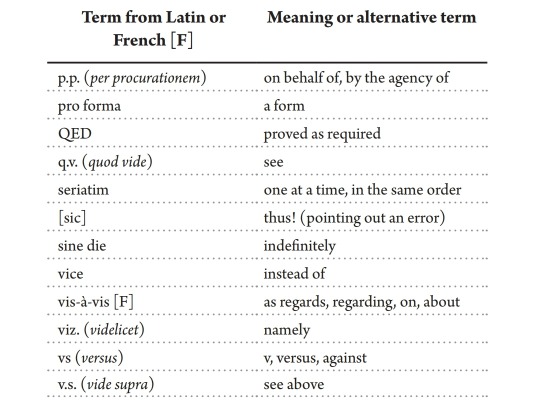
Reference – Oxford Guide to Plain English (Fifth Edition) by Martin Cutts
#plain english lexicon#books & libraries#basics#words#tumblr polls#poll#language poll#foreign words#latin and french phrase#english grammar#english#learning#polls#language#book references#spelling#english language#vocab#vocabulary#writing#language learning#latin and french terms#terms
11 notes
·
View notes
Text
for all the artists out there, here are my favorite resources i use to learn!
Files
The Complete Famous Artist Course
Art Books and Resources
Art, Anatomy, and Color Books
PDF Files of Art Books
Internet Archive
YouTube
My YouTube Playlist of Tutorials
How to Draw Facial Features
Drawing and Art Advice
Drawing Lessons
Art Fundamentals
Anatomy of the Human Body
2D Animation
Perspective Drawing
Websites
Pinterest Board for Poses
Another Pinterest Board for Poses
Pinterest Boards for References
Reference Angle
Figurosity
Sketch Daily
Line of Action
Human Anatomy
Animal Photo References
Humanae - Angélica Dass
Fine Art - Jimmy Nelson
Character Design References
CDR's Twitter Account
iamagco's Twitter Account
taco1704's Twitter Account
takuya_kakikata's Twitter Account
EtheringtonBro's Twitter Account
Drawabox
Color Wheel
Color Palette Cinema
Free Images and Pictures
Free Stock Photos
FILMGRAB
Screen Musings
William Nguyen Light Reference Tool
Animation References - sakugabooru
Animation References - Bodies in Motion
#art#art resources#art books#anatomy#composition#painting#art tips#art help#art tutorial#perspective#color theory#art reference
13K notes
·
View notes
Text

meditations on first philosophy (1641) - rene descartes
"who give a shit"
#rene descartes#ok#so this is a reference to that post#bc i cant stop saying it#sorry i havent been active#ive been working on an opera#and have been having like p bad health issues#but its ok#learning to crochet a minecraft frog#idk if itll be like any good#whatever life is love anyway#blackout poem#blackout poetry#author#book#poetry
60K notes
·
View notes
Text
handmade drawing references :)

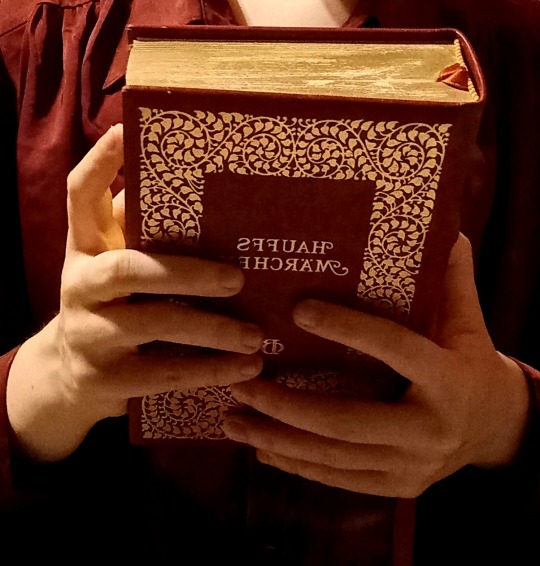
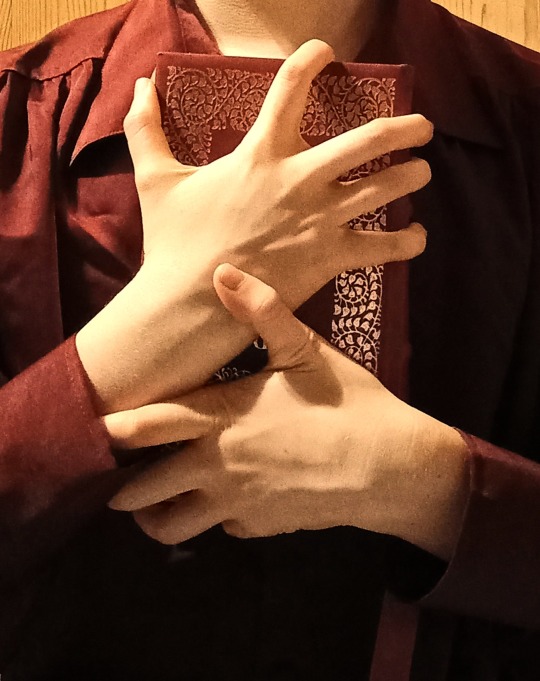
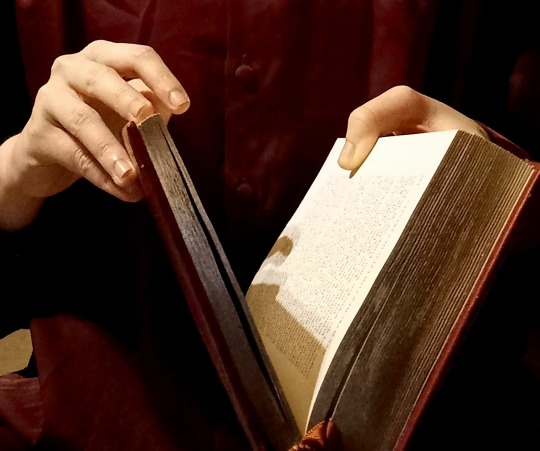



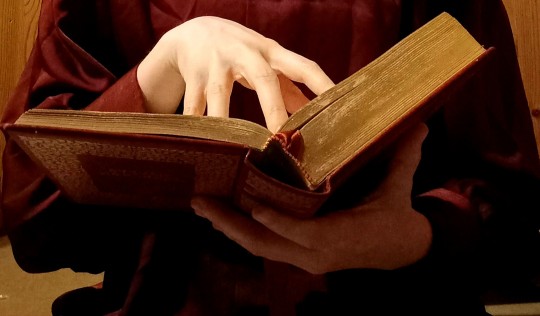
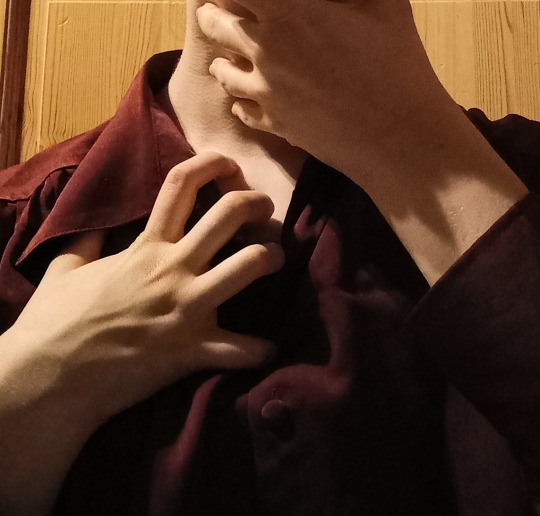
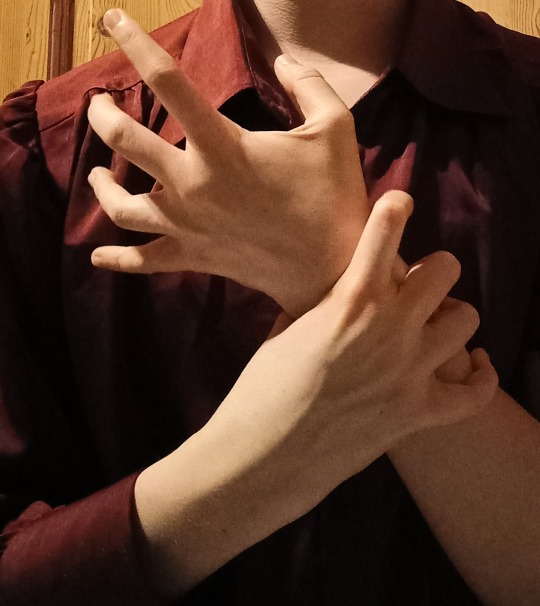


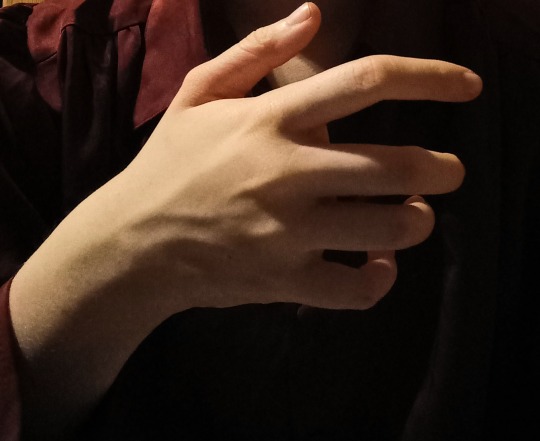



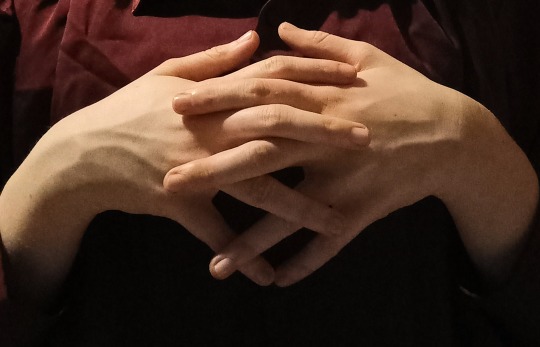

I took these pictures mainly to analyze my hand structure. Feel free to use them for your art, if you'd like to!
#hands#hand#book#books#reference#references#art reference#drawing reference#reference material#hand reference#book reference#reference photos#pose#poses
28K notes
·
View notes
Text

Bats in their natural habitat
#batfam#dick grayson#jason todd#nightwing#red robin#tim drake#damian wayne#cassandra cain#orphan#batgirl#Robin#batman#digital art#my art#dc#dc fanart#colouring is my nemesis#photo references used cause I suck at anatomy#thinnest war and peace book you’ll ever see 😭#obsessed with how Cass turned out
11K notes
·
View notes
Text
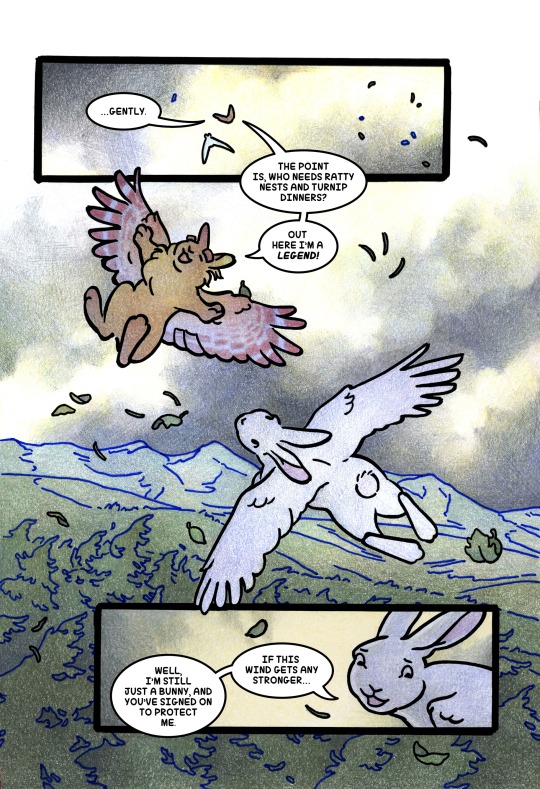



In Princess Aster's world, bunnybirds live in contented isolation, keeping themselves detached from the world in order to practice magic. Nothing is ever wrong, and no one is ever angry...even as Aster's people seem to be slowly disappearing.
When her father is next to vanish, Aster resolves to find and rescue the missing bunnybirds—even if it means journeying over the rim of the world itself!
My middle grade graphic novel is officially available for preorder! Bunnybirds is a story about trauma, friendship, and my experience with autistic masking. It was drawn entirely with Prismacolor colored pencils and Pandafly markers, with Photoshop applied for color enhancement and text.
Check it out maybe! :D
That last panel with Carlin (the brown bunnybird) facing the corner was directly inspired by this wonderful TMA comic by @nubs-mbee!
#colored pencil#2024 debut#graphic novel#if you're wondering whether the bunnies are gay#of course they're gay who do you think I am#they get a lil face-lick kiss as the end of the book#and Carlin is explicitly referred to as Aster's girlfriend in book two#there's poly on the horizon as well if my publisher allows it! Keep your fingers crossed for me y'all
3K notes
·
View notes
Text



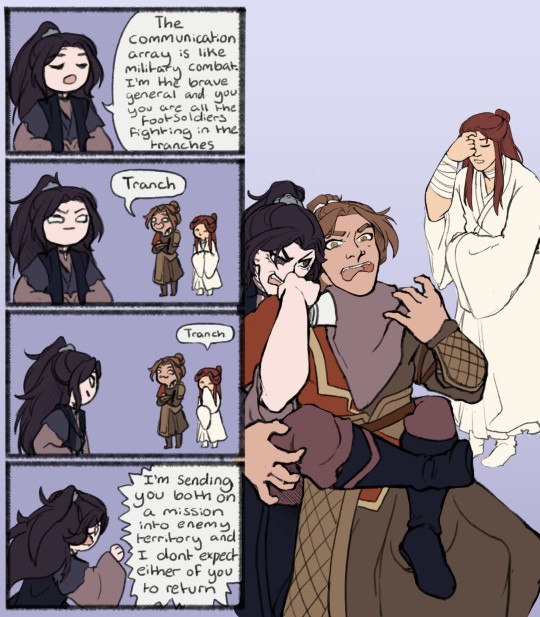
More doodles (ft Xianle Trio mostly Feng Xin)
#heaven official's blessing#heaven official's blessing fanart#tgcf#tgcf fanart#xianle trio#xie lian#feng xin#mu qing#hua cheng#hualian#idk how Feng Xin ended up in the most panels given he's probably my least favorite of the trio#oh well#there will be more doodles later#thought i had while drawing this: do you think they gave Mu Qing his slutty little choker as a reference to the shackle he gets later on?#i might be reading too much into that#didnt let myself interact with the fandom till i finished the books#so i got a lot of catch up doodles to do now
3K notes
·
View notes
Text
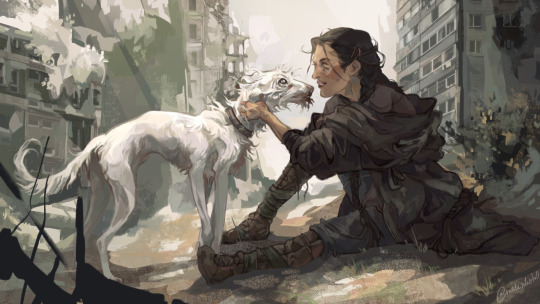
noodle era is. oh jod, nona means so much to me. she changed my brain chemistry
#the locked tomb#nona the ninth#noodle the dog#tlt fanart#tlt#im so obsessed with this book#like its unreal#i used nier automata reference for new rho fight me about that
7K notes
·
View notes
Text



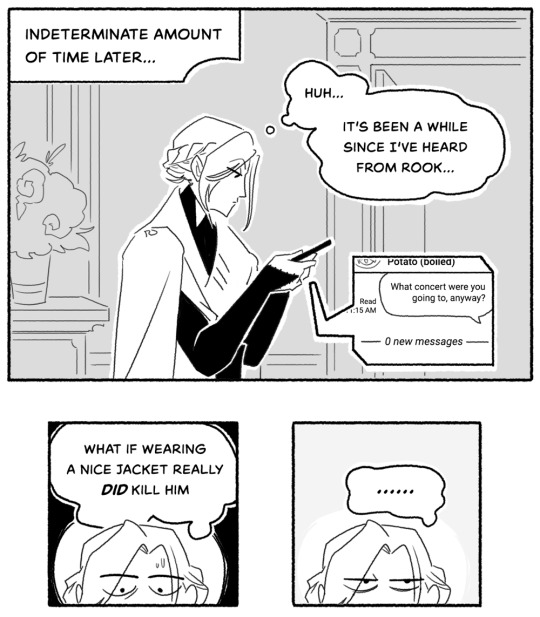
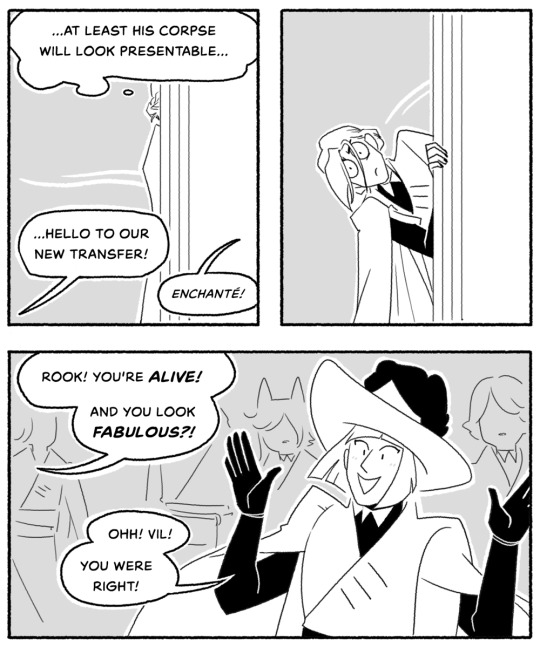
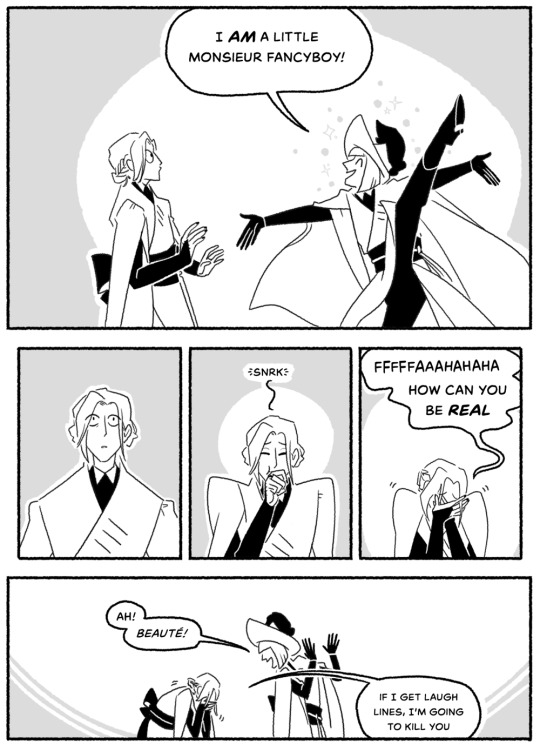
the recent resurgence in episode 6 talk has led me to reminiscing about Rook's absolutely buckwild backstory. man tries on a nice jacket exactly once and immediately re-evaluates his entire life.
(this has actually been sitting around for a few days because I keep second-guessing it, so uhhh sorry if it's weird! I can't tell anymore!)

#art#twisted wonderland#twisted wonderland episode 6 spoilers#twisted wonderland book 6 spoilers#<- gonna keep tagging for a bit for people who haven't finished it yet#me drawing pre-pomification rook: mm-hmm. yes. applejack.#i saw someone once refer to rook's backstory as b*mboficiation and it has haunted me ever since#it's no wonder vil thinks he can reform epel. look at what he's already done.
8K notes
·
View notes
Text
A fantasy read-list: A-1
Fantasy read-list
Part A: Ancient fantasy
1) Mythological fantasy (Greco-Roman)
The oldest form of fantasy in the history of mankind is, without a doubt, mythology. The roots of the modern fantasy genre are found in the old myths and legends of the Antiquity - and so this read-list will open with a few works of reference when it comes to mythology, the most famous texts covering the legends of old.
# The “founding duo”: Homer and Hesiod
These two poets form the oldest Greek mythological texts known to history, and together they created the basis on which classical Greek mythology formed itself (though Hesiod and Homer had conflicting mythology, with numerous differences in pantheons, relationships and cosmogonies, resulting in an “Homeric” Greek mythology - older and more archaic - and an “Hesiodic” Greek mythology - the most famous and widespread one, the “classical” pantheon).
Homer’s Iliad and Odyssey, the two greatest epics of Ancient Greece, and the two works from which the epic genre originally defined itself. The Homeric Hymns were probably not written by Homer himself, just written in his style, but they are also a series of mini-epics each depicting the greatest adventures and most famous legends of the Greek gods.
Hesiod’s Theogony is the cosmogony of Ancient Greece, and the creation legend of its mythology. He also collected/wrote several Greek myths in his Works and Days.
# Callimachus’ Aetia (a poem explaining the mythological origins of rites, cults and worships, in the style of the Theogony) and Hymns (hymns to the god in the style of the Homeric Hymns)
# Apollonius’ Argonautica. Another famous Greek epic, and the main source of information for the myth of Jason, Medea and the Argonauts.
# The trio of famous Ancient Greece tragedy playwrights. Aeschylus, author of Prometheus Bound, the Seven Against Thebes, and the Oresteia trilogy (Agamemnon, The Libation Bearers, The Eumenides). Sophocles, with his Theban trilogy (Oedipus-Rex, Oedipus at Column, Antigone) and other plays such as Ajax or the Women of Trachis. Euripides, famous for his Medea, Hippolytus, Alcestis, Herakles, Iphigenia in Tauris, The Bacchae and many more...
Plus, in a different genre, Artistophanes, the “father of comedy” or “prince of comedy”: The Birds and The Frogs are his most mythological plays, though other classics of his include The Clouds, The Wasps or Lysistrata...
# The fourth volume of Diodorus Siculus’ “Bibliotheca historica”, which is a true encyclopedia of all the Greek myths and legends Diodorus could find.
# The “founding duo” of Roman myths: the Roman equivalent of Hesiod and Homer, with works just as influential as them.
Virgil, who with his Aeneid formed a “sequel” to Homer’s Iliad and created the greatest Roman epic of history - he also collected/rewrote several myths in his Bucolics and Georgics.
Ovid’s Metamorphoses is the other main piece of literature that defined Ancient Roman literature and mythology as a whole, and for the longest time in Europe it stayed the main source of information about Greco-Roman mythology - to the point Ovid’s Metamorphoses was much more well-known than Hesiod or Homer’s own works. Other works of his with mythological tales include his Ars Amatoria and his Fasti.
# Titus Livius’ “Ab urbe condita”, a work containing the history of Rome, but opening with the myths and legends concerning the foundation of this city.
# Antoninus Liberalis’ Metamorphoses, the lesser-know “twin” of Ovid’s own Metamorphoses.
# Hyginus’ Fabulae and De Astronomica. Compilation of myths and legends told with a scientific mind.
# Apuleius’ The Golden Ass. A strange, bizarre, mystic and comical novel of late Ancient Rome, which contains the most famous version of the legend of Psyche and Cupid.
# The works of Lucian, another author of late Antiquity. Highlights include The Dialogues of the Gods, a parody of the Homeric epics and mythology ; Lover of Lies, which contains the earliest version of “The Sorcerer’s Apprentice” tale ; and A True Story, considered by many to be the earliest work of sci-fi.
# The Orphic Hymns, and the Orphic Argonautica, the two main texts informing us about the “Orphic religion”, a mystery cult with its own mythology, cosmogony and beliefs completely separate from the “classical” Greek mythology of Hesiod/Homer.
# Nonnus’ famous Dionysiaca, the last of the great mythological epics of Antiquity, written by a very, VERY late Greek author (we are talking of a post-Roman era author, living in an early-Christianized Greece).
#read-list#fantasy#fantasy read-list#mythology#greek mythology#roman mythology#book resource#resources#book references#references
33 notes
·
View notes
Text
El abecedario (The Alphabet)

English alphabet has 26 letters; the Spanish alphabet has 30. The four additional letters are:
1} ch (considered one letter), which produces the ch sound in “cha cha”.
2} ll (considered one letter), which produces the y sound (in Latin America) or the j sound (in Spain).
3} ñ, which produces the ny sound heard in señor. That little squiggly on top is called a tilde.
4} rr (considered one letter), which produces the highly trilled–sounding r.
Reference – Spanish Vocabulary by Dorothy Richmond
#spanish#books & libraries#language#language poll#books and libraries#basics#words#alphabet#tumblr polls#polls#language blog#beginners#vocabulary#spanish vocabulary#el abecedario#spanish alphabet#book references#books#books and reading
5 notes
·
View notes
Text
Color Like a Classic Comic Book
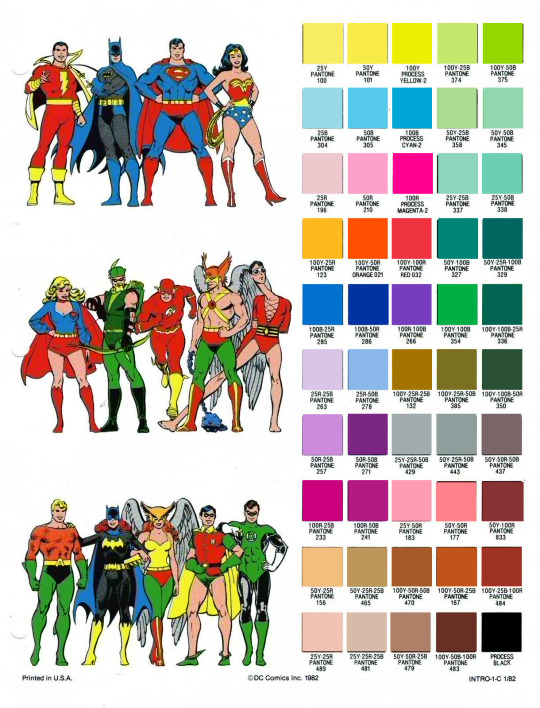
I'm doing some tinkering on Fauxstalgia stuff, and since I believe in sharing resources, here's an RGB PNG version of the official DC pantone guide, with the swatches re-sampled from current pantone standards. This set is from 1982, but should be generally believable for most stuff post-WWII.
The versions floating around online (two of which are under the fold) are scans of prints and are not accurate for color-picking.
Now, these colors would also be altered by the printing process, but for clean, pre-print versions, here's some authenticity.


3K notes
·
View notes